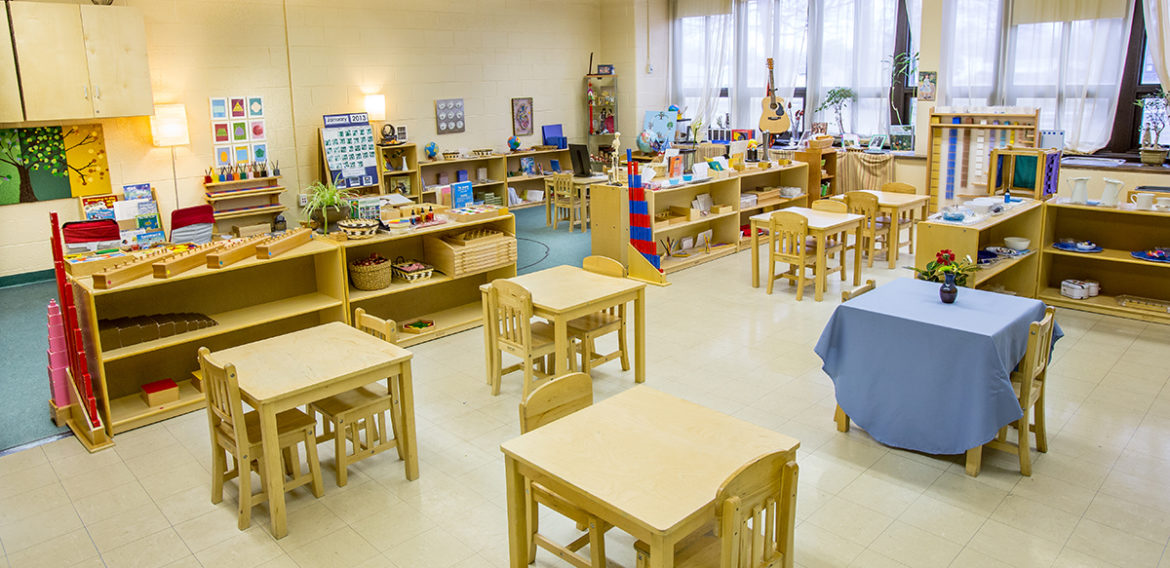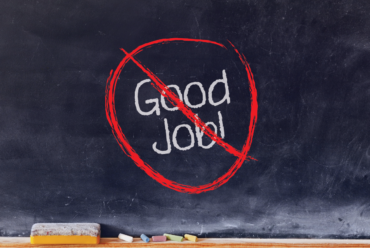Behind the Scenes: Montessori Pre-Primary Classroom
If you take a glimpse into a traditional pre-primary Montessori classroom you will find it abuzz with activity. This environment offers children experiences in the practical life, sensorial, language, mathematics and cultural, (geography, history, science, art and music) areas. They are free to choose their own materials, developing large and fine motor skills as they interact with the materials, investigating as they explore activities in all areas of the classroom.
Practical Life
You may find children sweeping up a spill or watering the classroom plants. Others may be sewing an applique on a pillow or practicing how to tie their shoes. The exercises in this area, practical life/everyday living, serve to develop the child’s sense of order, coordination, concentration and independence. Each of these skills is happily attained through the repetition of activities during which, children learn to take care of themselves, others, and the classroom environment. As adults, we may find dusting shelves or making the bed as tedious chores; however, you will witness children truly taking pleasure in such tasks. Maria Montessori said, “Never help a child with a task at which he feels he can succeed.” The exercises in practical life address Dr. Montessori’s point as they increase self-efficacy and lead the children to the deep inner belief that they will ultimately be successful to that which they apply themselves. Thus, you will find children set up for successful, independent work, not only in the practical life area of the classroom (the foundation of the pre-primary level), but for life itself.
Sensorial
As you glance over to the sensorial area, children will be found working with the sensorial apparatus – often building a tower with blocks known in the classroom as the pink tower, or perhaps you will see the brown stairs in use. While these particular activities focus on visual discrimination, Dr. Montessori designed each of the materials within this area to refine and develop the five senses with one sensorial aspect being the main objective during each presentation. As the children work with the sensorial materials, they explore the classification, contrasting and comparison of color, shape, smell, feel, temperature, weights, and textures of these classic Montessori materials.
Language
While there is an area dedicated to language, the Montessori classroom is a language rich environment, therefore you will find activities in every curriculum area which expose the children to new vocabulary and language experiences. All aspects of language come alive in this environment without undue stress. Peer interactions are encouraged, as well as all other meaningful opportunities to engage, with the understanding that they are crucial to each child’s development.
Mathematics
You also may witness students asking for lessons in the math area. Dr. Montessori believed in introducing the child to the big picture before moving to the small. Therefore you may see a 4 year old being introduced to the decimal system or working on 4-digit addition rather than single digit. Through the use of concrete materials, these concepts are taught and it is not until the child can display sound understanding that they are introduced to abstract thinking. In this way, the children are free to continually explore the math materials without fear or trepidation.
Cultural
The young child’s mind is like a sponge which Montessori often referred to as the absorbent mind. She believed the absorbent mind allows children to take in all there is to offer in their surroundings. Therefore, when the children are introduced to biology, physical, and earth science activities they will internalize the scientific language and have a prior understanding to call upon in later academic years. It is as though they have been presented with a key to the world.
Finally, you may notice students using chopsticks to serve sushi, or children dressing in regalia of another country. In the background, you may hear classical music being played quietly. Ask any child and they will surely be able to tell you the name of the composer who composed the piece you are listening to. Take a quick look around and you may find the works of well-known artists hanging at the child’s level. The geography area introduces children to, not only their own culture, but the culture and traditions of others. Diversity is embraced and celebrated in the Montessori setting. The cultural area embodies so much and helps the students gain a better appreciation for each of these studies.
At the end of your visit to a Montessori pre-primary classroom, you will have found children working on a variety of activities, from practical life to language, science to geography, all the while moving around the environment with a sense of confidence and comfort. Freely able to choose activities appropriate for their current need, the children approach increasingly challenging activities with deep self-assurance. Just as Dr. Maria Montessori did over 100 years ago, the Montessori teacher provides a carefully prepared environment designed with the development of the child at the forefront. And generations of children have benefited from what Dr. Montessori knew all those years ago, “Free the child’s potential, and you will transform him into the world.”










No Comments